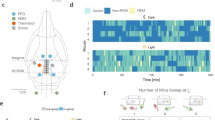Abstract
The intent of this study was to evaluate whether differences in brain excitability would influence learning. Two selectively bred lines of mice hypothesized to be different for this trait were employed, and a unique apparatus was used to evaluate learning in these animals when trained and retested in groups as well as individually. The results of Experiment 1 clearly demonstrate that short-sleep (SS) mice learn better than long-sleep (LS) mice and that adult animals learn better than young animals for both lines. Additionally, it was demonstrated that animals trained and tested in groups performed worse than individual animals. Experiment 2 was designed to ascertain whether the detrimental effect of grouping animals occurred on acquisition or retention. The results surprisingly show that the animals had to be grouped during both acquisition and retention for a deficit to appear. Experiment 3 analyzed how a “plant” animal affected the other animals in the group during retention. It was discovered that for LS mice the experience of the plant animal did not matter, but for SS mice only an animal naive to the shock experience could disrupt performance. These results are discussed in the context of social learning in animals.
Similar content being viewed by others
References
ALLEE, W. C. (1938). Social life of animals. New York: Norton.
ALPERN, H. P., & JACKSON, S. A. (1978). Stimulants and depressants: Drug effects on memory. In M. A. Lipton et al. (Eds.), Psychopharmacology: A generation of progress (pp. 663–675). New York: Raven Press.
ALPERN, H. P., & MARRIOTT, J. G. (1973). Short-term memory: Facilitation and disruption with cholinergic agents. Physiology and Behavior, 11, 571–575.
ALPERN, H. P., & MCINTYRE, T. D. (in press). Evidence that the selectively bred long-and short-sleep mouse lines display common narcotic reactions to many depressants. Psychopharmacology.
CHURCH, A. C., FULLER, J. L., & DUDEK, B. C. (1976). Salsolinol differentially affects mice selected for sensitivity to alcohol. Psychopharmacology, 47, 49–52.
DAWSON, R. G., & MCGAUGH, J. L. (1973). Drug facilitation of learning and memory. In J. A. Deutsch (Ed.), The physiological basis of memory (pp. 78–111). New York: Academic Press.
DEUTSCH, J. A. (1973). The cholinergic synapse and the site of memory. In J. A. Deutsch (Ed.), The physiological basis of memory (pp. 59–76). New York: Academic Press.
FERGUSON, G. A. (1976). Statistical analysis in psychology and education. New York: McGraw-Hill.
GALEF, B. G. (1976). Social transmission of acquired behavior: A discussion of tradition and social learning in vertebrates. In J. S. Rosenblatt (Ed.), Advances in the study of behavior (pp. 77–99). New York: Academic Press.
GALEF, B. G. (1977). Mechanisms for the social transmission of acquired food preferences from adult to weanling rats. In L.M. Barker, M. Best, & M. Domjan (Eds.), Learning mechanisms in food selection (pp. 123–148). Waco, Texas: Baylor University Press.
GANDOLFI, G. (1976). Social learning in non-primate animals. Bulletin of Zoology, 42, 311–329.
GREER, C. A., & ALPERN, H. P. (1977). Mediation of myoclonic seizures by dopamine and clonic seizures by acetylcholine and G Ab A. Life Sciences, 21, 385–392.
GREER, C. A., & ALPERN, H. P. (1978). Differential neurohumoral modulation of myoclonic and clonic seizures. Archives Internationales de Pharmacodynamic et de Thérapie, 236, 74–85.
MAINARDI, D. (1976). Tradition and the social transmission of behavior in animals. In J. S. Rosenblatt (Ed.), Advances in the study of behavior (pp. 227–255). New York: Academic Press.
MCCLEARN, G. E., & KAKIHANA, R. (1973). Selective breeding for ethanol sensitivity in mice. Behavior Genetics, 3, 409.
MCGAUGH, J. L., & PETRINOVICH, L. F. (1965). Effects of drugs on learning and memory. International Review of Neurobiology, 8, 139–196.
MCINTYRE, T. D., & ALPERN, H. P. (1983). The interaction of Cns depressants and Gabaergic drugs in mice selectively-bred for the narcotic effects of ethanol. Neuroscience Abstracts, 9(1), 130.
THORPE, W. H. (1983). Learning and instinct in animals (3rd ed.). London: Methuen.
Author information
Authors and Affiliations
Rights and permissions
About this article
Cite this article
Alpern, H.P., McIntyre, T.D. Individual Versus Group Learning: Developmental and Social Differences in Two Selected Mouse Lines. Psychol Rec 35, 203–211 (1985). https://doi.org/10.1007/BF03394926
Published:
Issue Date:
DOI: https://doi.org/10.1007/BF03394926




